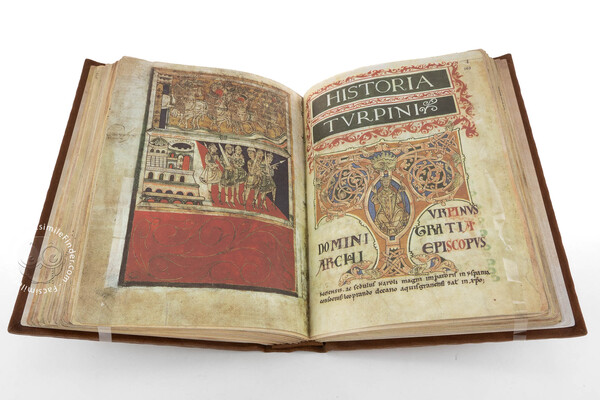 攀登声学网络
攀登声学网络
- From “codex” to “soundex”
- Equipment List
- 装备清单
Table Of Contents
Introducing the Idea of MAN's "soundex" Field Recording Sessions!
written by Mantle Program on 2025-03-07
请等待中文翻译。
From “codex” to “soundex”

The only full-page artwork in the Codex Calixtinus (Codex Compostellus), 1173, the beginning of book IV, the Chronicle of Turpin. [^1]
The “codex” form is regarded as the most significant advancement in the format of physical books. Starting in the 4th century AD, the codex format emerged as the dominant form of book, while the traditional scroll gradually fell out of favour [^2]. It replaced the form of scroll with folded collections of vellum, parchment, or papyrus sheets during the late Roman Empire, serving as the precursor to modern books.
Intuitively, the name of “soundex” [^3] follows the naming schema of the “codex”, and can be regarded as a cognate of the “codex”. It’s efficacious here for “soundex” was essentially designated for the recall of the anamnesis of a bygone era, and tries it best to make anything transient elements in the phenomena of sound, to be immortal, with endless repercussions.
The “soundex” is hardly be said to be a experimental attempt to expand or to rectify the prevalent focuses of “field recording” to the wild field of mountaineering, but we hope “soundex” and the general MAN network solely to be near-sui generis and contribute to a extremely future world, which is conceivable and perceivable.
Personally, the two founders lived an uneventful life at the outset, they brought up the “soundex” to complete the philosophy of themselves, to be faithful to this world, and the absolute. They gave life to their ideas, make them came to be and to grow from its first raw state to its more perfect formation in art. They strive to make unfolded ideas folded, make unformed thoughts formed, make equivocal fragmentary recordings intensively enclosed in one self-contained system-thought of acoustics approach, by applying organon and criterion.
Equipment List
We have already listed some of the equipment, and more gears are being added to the inventory.
装备清单
我们已经列出了一部分装备,更多装备正在等待加入我们的库存。
录音机
- ZOOM H2n x 2
- SONY PCM D100 x 2
- ZOOM F3
- ZOOM F8
麦克风
- Deity S-Mic2
- Primo EM273 (Omni-directional)
- Interharmonics Geophon (Omni-directional)
监听耳机
- Beyerdynamic DT770 PRO (80 Ohm) x 2
- Sennheiser HD 25 x 2
- SONY MDR-7506 x 2
- Beyerdynamic DT240 PRO (34 Ohm)
- Austrian Audio Hi-X55
相机
- GoPro HERO4
- DJI OSMO Action5 PRO
- Sony VX2000
- Sony Handycam CCD-TR416 Video 8 XR Camcorder NightShot
- Canon PowerShot G12
- Nikon F80
- Sony FX6

